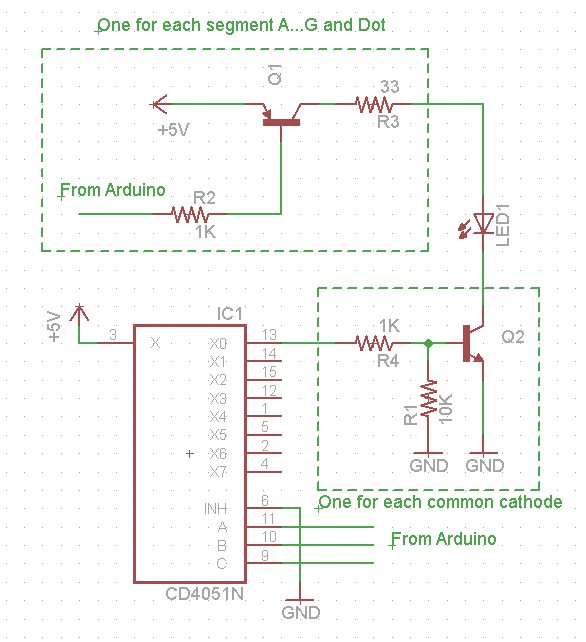In addition to the cathode drivers you will also need buffers for the 8 Arduino digital pins that are used for the Anodes.
Based on the LED display data sheet you may want to drive each segment with 10mA. Since each display digit is only driven 1/8 of the time you have to drive it with approximately 8 times as much current (80mA) to get an equivalent brightness.
Q1 only has to drive one LED at the time so a 2N3906 might be good enough.
Q2 has to be able to handle the current for all the segments in one digit, 7 + dot = 8. If you use 80mA per segments as an example, this means this transistor should be able to handle 8 x 80mA = 640mA.
The CD4051 is a multiplexer that may be an alternative to the 238 that was suggested in another answer.
An easier solution may be a Maxim MAX7219. It greatly simplifies the design and has a lot of functionality. You can use the Arduino's SPI bus to control it.
https://www.maximintegrated.com/en/products/power/display-power-control/MAX7219.html
Some Arduino related stuff can be found here: http://playground.arduino.cc/Main/LEDMatrix

